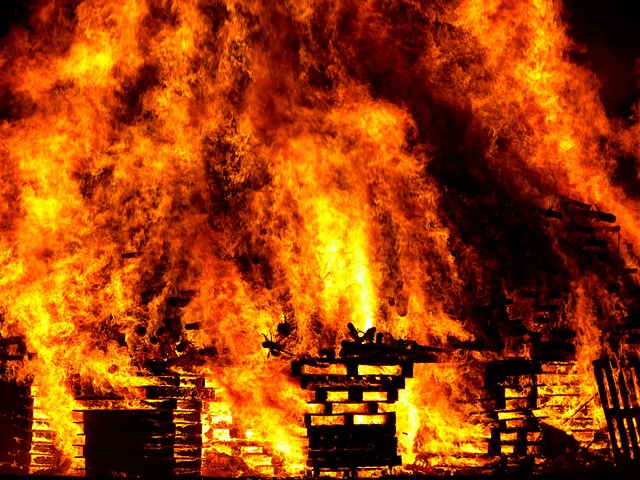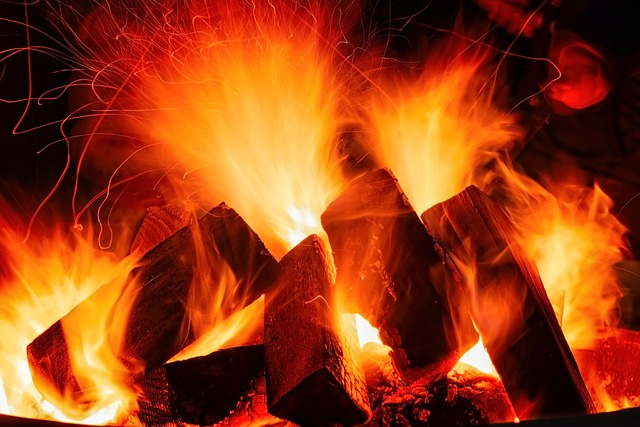Selling fire-damaged properties in California presents a unique opportunity within the state's competitive real estate market, despite challenges like stringent building codes and safety regulations. Understanding local market dynamics, navigating legal requirements, and transparently disclosing damage are crucial for successful sales. By emphasizing renovation potential and offering competitive pricing, sellers can attract buyers willing to invest in transforming distressed properties, catering to California's high demand for affordable housing.
“In the dynamic real estate market of California, distressed property sales present unique opportunities and challenges. This article delves into the intricate world of these sales, offering a comprehensive guide from every angle. We explore the driving forces behind distressed properties, particularly fire damage, its profound impact on real estate values, and the legal framework governing sales in California.
Furthermore, we uncover market trends, providing strategies for successful distressed property sales, catering to both sellers and buyers in this specialized sector.”
- Understanding Distressed Property Sales: A California Perspective
- Uncovering the Causes: Fire Damage and Its Impact on Real Estate
- The Process of Selling Fire-Damaged Homes in California
- Legal Considerations and Disclosures for Sellers
- Market Trends and Strategies for Successful Distressed Sales
Understanding Distressed Property Sales: A California Perspective

In California, distressed property sales have become an increasingly prominent aspect of the real estate market, particularly in areas affected by natural disasters like wildfires. When a home or property experiences fire damage, it often faces unique challenges that can impact its resale value and appeal to potential buyers. Selling fire-damaged properties requires a nuanced understanding of the local market dynamics and regulatory frameworks specific to California.
California’s strict building codes and safety regulations play a significant role in the process. Repairs and renovations are mandatory to ensure these properties meet safety standards, which can be both a requirement and an opportunity. While it may increase initial costs for sellers, these measures ultimately enhance the property’s value, making it more attractive to buyers. The California market also sees a surge in demand for affordable housing, providing an opening for distressed property sales, especially in areas where rebuilding efforts are underway after fires.
Uncovering the Causes: Fire Damage and Its Impact on Real Estate

In the competitive California real estate market, understanding the factors that influence property values is paramount for both buyers and sellers. One often overlooked yet significant issue is fire damage. Caused by a variety of unforeseen circumstances, from accidental sparks to deliberate acts, fire damage can profoundly impact the selling price and overall market perception of a property.
The effects of fire extend beyond the physical structure. Smoke damage, especially, can leave behind unpleasant odors and visible marks that deter potential buyers. In severe cases, extensive rebuilding may be required, adding substantial costs and time delays to the selling process. Moreover, location plays a crucial role; properties in areas prone to wildfires often face stricter building codes and higher insurance premiums, further complicating their resale value. Understanding these causes is essential for anyone considering selling fire-damaged property in California, as it allows for better preparation and transparent communication with potential buyers.
The Process of Selling Fire-Damaged Homes in California

Selling fire-damaged homes in California involves a unique and careful process due to the state’s stringent building codes and strict regulations for property restoration. Once a home is identified as damaged by fire, the first step is an extensive assessment to determine the extent of the damage. This includes structural integrity checks, evaluation of any hazardous materials (like asbestos), and assessing the potential environmental impact. Only after this thorough inspection can the owner proceed with repairs or consider alternative options like demolition.
The actual sale process begins with preparing the property for listing. Fire-damaged homes often require significant renovations, so it’s crucial to work with experienced contractors who can restore the property to its pre-fire condition or beyond. Once ready, real estate agents market these properties, highlighting any advantages like low competition in the neighborhood or potential cost savings for buyers willing to take on the renovation project. The sale typically involves a buyer who understands the unique circumstances and is prepared to invest in either repairs or the property’s transformative potential.
Legal Considerations and Disclosures for Sellers

When selling a fire-damaged property in California, there are several legal considerations and disclosures that sellers must be aware of to ensure compliance and transparency. The state has specific regulations regarding the sale of damaged properties to protect buyers from hidden risks. Sellers are legally obligated to disclose any known damage or potential hazards associated with the property. This includes providing detailed information about the extent of fire damage, such as the date and cause of the fire, the areas affected, and any structural or environmental issues that may require remediation.
California law also mandates that sellers complete and sign a ‘Disclosure Statement’ outlining these details. Failure to disclose material facts related to fire damage can lead to legal consequences, including liability for any losses or injuries buyers may incur post-purchase. It’s crucial to consult with a real estate professional or attorney specializing in distressed property sales to navigate these regulations effectively. This ensures that the sale process remains lawful and provides buyers with accurate information about the condition of the selling property.
Market Trends and Strategies for Successful Distressed Sales

In the dynamic real estate market, distressed sales, particularly in California, present unique opportunities and challenges for both buyers and sellers. Selling fire-damaged properties in California requires a strategic approach to navigate the specific market trends. One key trend is the increasing demand for affordable housing, which can make fire-damaged homes attractive to investors looking to renovate and flip properties.
To achieve successful distressed sales, sellers must adopt adaptable strategies. This includes thoroughly assessing the extent of damage from fires, as well as potential environmental hazards like asbestos or lead paint. Transparency in disclosing these issues is crucial for fostering trust with prospective buyers. Additionally, offering competitive pricing, flexible terms, and attractive incentives can significantly boost interest, especially among cash buyers and those seeking renovation projects. Marketing fire-damaged properties effectively involves highlighting the potential for transformation, using compelling before-and-after visuals to showcase the possibilities within.
Selling fire-damaged properties in California involves a unique set of challenges, from understanding the market trends to navigating legal considerations. However, with the right strategies and knowledge of the process, distressed sales can be successful ventures. By recognizing the impact of fire damage, adhering to legal disclosures, and embracing innovative marketing approaches, sellers can navigate this complex landscape. Whether you’re a real estate professional or an investor, mastering the art of selling fire-damaged homes in California opens doors to lucrative opportunities while contributing to the region’s recovery and renewal.






